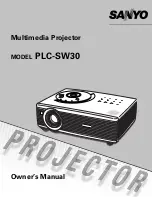
BEFORE INSTALLATION
To properly install, use, and enjoy
the Stair Barrier, you need to know
the staircase terms shown in the
diagram below.
Before installation of the Stair
Barrier, measure the distance
between the Banisters at the
bottom of your Staircase and
confirm that you have purchased
the correct Stair Barrier model.
USES
6–24 months
large & small
Banister to Wall
Indoor/Outdoor
(
BWIO
)
on back page
package contains:
1 Stair Barrier (BWIO)
1 Installation kit
secures stair widths:
regular
36–43”w x 32”h
wide
43–52”w x 32”h
Banister to Banister
Indoor/Outdoor
(
BBIO
)
package contains:
1 Stair Barrier (BBIO)
secures stair widths:
regular
36–42”w x 32”h
wide
42–52”w x 32”h
Keeping children and pets off the stairs
Installation Instructions
Indoor/Outdoor (IO)
BANISTER TO BANISTER INSTALLATION INSTRUCTIONS:
1. While facing your staircase, position the front of the Stair Barrier between the
banisters at the bottom stair.
2. Position the Stair Barrier as far to the rear of the tread as possible–if there are
multiple spindles on the tread where the Stair Barrier is to be installed, use the
spindle located closest to the rear of the tread.
See
Fig. 1
.
3. Thread the top left strap of the Stair Barrier around the left banister and latch
the buckle. Next, thread the top right strap of the Stair Barrier around the
right banister and latch the buckle. You may use the banister, spindles, or both
to attach the straps. In some cases, you may choose to use multiple spindles.
See Figs. 2 and 3
.
4. Repeat this process for the middle and bottom straps.
5. Tighten all straps so that the Stair Barrier is taught.
6. As shown in
Fig. 4
, when properly installed, the sides of the Stair Barrier should
be flush with the banisters or spindles–there should be no gaps. The bottom
edge of the Stair Barrier should be flush with the tread–there should be no gap.
7. If one side of the Side Barrier is unlatched to allow access to the staircase,
completely roll the Stair Barrier to the side that is still attached to the banister.
See Fig. 5
. When not in use, the Stair Barrier should not block the staircase.
See Fig. 6
.
1
2
3
spindle
installation
alternative
banister
installation
Spindle
Riser
Tread
Molding
Wall
Wall Rail
Hand Rail
Banister
4
no gaps
5
6
WARNING
To prevent serious injury or death, securely install the
Stair Barrier and use according to the Stair Barrier’s
instructions. Read all warnings and instructions before
.
r
e
i
r
r
a
B
r
i
a
t
S
e
h
t
r
e
v
o
p
e
t
s
o
t
t
p
m
e
t
t
a
r
e
v
e
N
.
n
o
i
t
a
ll
a
t
s
n
i
Never use at the top of any staircase. Only use with all
buckles latched and all straps tight and secure. Never
use the Stair Barrier without its internal struts. For use
.
s
t
e
p
r
o
/
d
n
a
e
g
a
f
o
s
r
a
e
y
2
o
t
s
h
t
n
o
m
6
n
e
r
d
li
h
c
h
t
i
w
Proper adult supervision is required — never leave any
child unattended. Never use with a child who can climb
over or dislodge the Stair Barrier. The Stair Barrier will
not prevent all accidents. Misuse may cause serious
injury or death.
CAUTION
Internal Struts must be
installed during use.
Do not remove Internal
Struts, except to clean.
Always latch Buckles
during use. Always
adjust all Straps to
ensure tight fit.
When one side of the Stair Barrier is unbuckled to
allow access to the staircase, completely roll the Stair
Barrier to other side of the staircase with Straps and
Buckles rolled internally. See Fig. 5 above.




















